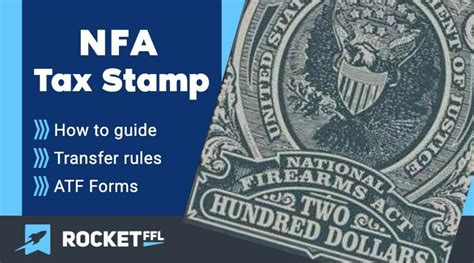SBR Tax Stamp: Navigating the ATF Regulations
The Schallenger-based receiver (SBR) tax stamp process can seem daunting, but understanding the regulations set by the Bureau of Alcohol, Tobacco, Firearms and Explosives (ATF) is key to a smooth and legal experience. This comprehensive guide breaks down the process, clarifying common questions and helping you navigate the complexities of obtaining your SBR tax stamp.
What is an SBR Tax Stamp?
An SBR tax stamp, officially known as a tax-paid stamp for a short-barreled rifle (SBR), is a legal requirement for owning and possessing a firearm classified as an SBR under the National Firearms Act (NFA) of 1934. This means a rifle with a barrel length of less than 16 inches or an overall length of less than 26 inches. The tax stamp serves as proof that you have paid the required tax and have been approved by the ATF to own this type of firearm. Without this stamp, possessing an SBR is a serious federal crime.
How to Obtain an SBR Tax Stamp: A Step-by-Step Guide
The process involves several key steps, each demanding careful attention to detail:
-
Complete ATF Form 1: This is the core application for registering your SBR. You’ll need to provide accurate personal information, detailed descriptions of the firearm, and clear photographs. Any inaccuracies can delay or even deny your application. Double- and triple-check your work!
-
Pay the Tax: A significant tax is associated with registering an SBR. This amount is subject to change, so always refer to the official ATF website for the most up-to-date information. The tax is paid directly to the ATF as part of the application process.
-
Fingerprint and Photograph: You'll need to submit fingerprints and a photograph. The specifications for these are detailed on the ATF Form 1 instructions. Using a certified professional is highly recommended to ensure compliance and prevent delays.
-
Submit Your Application: The completed Form 1, along with the required tax payment, fingerprints, and photographs, must be mailed to the designated ATF address. Keep a copy of everything for your records.
-
Waiting Period: Be prepared for a potentially lengthy wait. The ATF processing time can vary significantly, often taking several months or even longer. Patience is essential during this phase.
-
Approval and Tax Stamp Receipt: Once approved, you'll receive your tax stamp. This serves as official documentation proving your legal ownership of the SBR.
What Happens if My Application is Denied?
The ATF may deny your application for various reasons, including providing incorrect information, having a criminal record, or failing to meet other eligibility requirements. If denied, you'll receive a notice explaining the reasons for the denial. You may be able to appeal the decision, but this is a complex process requiring legal expertise.
Frequently Asked Questions (PAA)
What are the penalties for possessing an SBR without a tax stamp? Possessing an unregistered SBR is a serious federal crime punishable by significant fines and imprisonment.
How long does the SBR tax stamp application process take? The processing time can vary greatly, ranging from several months to over a year. There's no guaranteed timeframe.
Can I transfer an SBR after it’s registered? Yes, but the transfer process involves additional paperwork and ATF procedures, similar to the initial registration.
What constitutes a "short-barreled rifle" under ATF regulations? A rifle with a barrel less than 16 inches or an overall length less than 26 inches. Any modifications that alter these measurements will require updating your registration.
Are there any specific requirements for the photographs submitted with the application? Yes, the ATF provides specific guidelines on photo size, quality, and format. Failure to meet these specifications can lead to delays.
Disclaimer
This information is for educational purposes only and should not be considered legal advice. Always consult with an attorney specializing in firearms law for guidance on specific situations. The information provided here reflects the current understanding of ATF regulations; however, regulations can change, so always refer to the official ATF website for the most up-to-date and accurate information. This article is not an endorsement of SBR ownership, and compliance with all applicable federal, state, and local laws is paramount.

